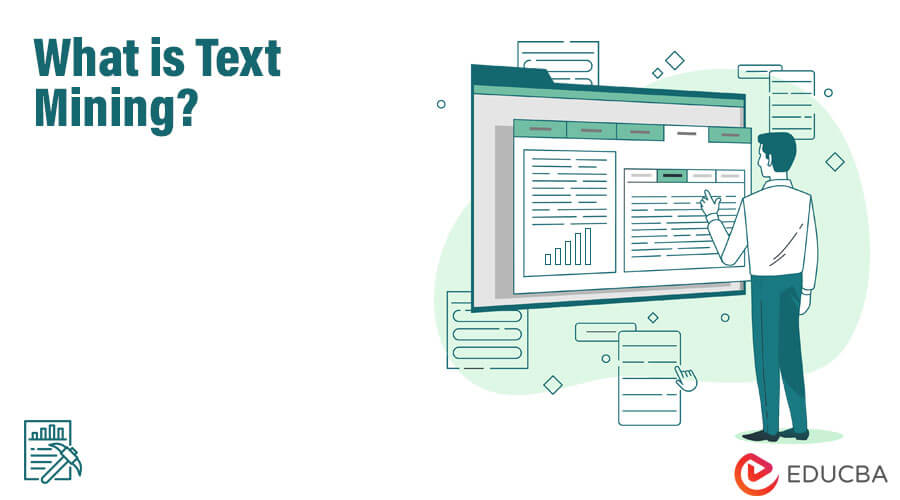Introduction to Text Mining
Text mining is the process of extracting high-quality information from unstructured text data. It involves identifying patterns and trends in the data using statistical methods. By doing so, it can help users to save costs on operations and to uncover hidden insights from their data.
Text mining is typically used with natural language processing (NLP) or other artificial intelligence (AI) technologies to convert unstructured data into useful information. It focuses solely on the text and the patterns of the text. It is a valuable tool for various applications such as customer services, cybercrime prevention and detection, and business intelligence.
What is Text Mining?
- With the rise of big data, data scientists and other users can leverage deep learning and other advanced techniques to analyze massive sets of unstructured data.
- After identifying important facts, relationships, and assertions within the text, text mining can help to turn that information into structured data, which can be visualized using HTML tables, mind maps, charts, etc. This structured data can also be integrated with other structured data in databases or data warehouses, and further classified using machine learning (ML) systems.
- Text mining can be applied to a variety of text-based data sources, such as corporate documents, customer emails, survey comments, call center logs, social network posts, medical records, etc. By analyzing these sources of data, businesses can discover potentially valuable insights and improve their operations.
- Text mining and natural language processing (NLP) is artificial intelligence technology that helps to process and analyze human language. They can quickly transform the key content in text documents into quantitative, actionable insights.
How does Text Mining make work easy?
- Text mining makes working with unstructured data easier by focusing on text instead of more structured forms of data. It uses natural language processing (NLP) technology to organize the data for quantitative and qualitative analysis.
- The process involves several steps, including information retrieval or identification (collecting data from various sources for analysis), applying text analytics (such as part-of-speech tagging or named entity recognition to categorize quoted text features), disambiguation (clustering similar terms or entities together), document clustering (to identify sets of similar text documents), place the noun and other terms that refer to the same object, then finding the relationship and fact among entities and additional information in text.
- Additionally, one can perform sentiment analysis and quantitative text analysis to create the analytic model that helps to generate business strategies and operational actions.
What can one do with Text Mining?
- One of the most popular applications of text mining is sentiment analysis. It can track customer reviews and opinions about a product, restaurant, or company. Sentiment analysis uses natural language processing (NLP) to identify positive or negative feelings expressed by customers. Consequently, one can use it to improve customer satisfaction, solve issues, and influence marketing efforts.
- Other common uses include security applications, biomedical applications, marketing applications like analytical customer relationship management, ad targeting, job candidate screening, scientific literature mining, blocking spam emails, classifying website content, identifying fraudulent insurance claims, and examining corporate documents as part of electronic discovery processes.
Advantages
- Helps detect insurance fraud, manage risks, conduct scientific analyses, and understand customer behavior. This can help companies improve their operations and make better decisions.
- By analyzing large volumes of text data, text mining can help companies detect issues early and resolve them before they become major problems that negatively impact the company. Additionally, analyzing customer reviews and communications can help identify necessary features and improvements to enhance the customer experience. This can lead to increased sales, revenue, and profits for the company.
- In the healthcare industry, it can identify potential health risks, diagnose diseases, and improve patient care.
Required Skills
To perform text mining, individuals should possess skills in data analysis, statistical analysis, big data processing frameworks, database management, machine learning or deep learning algorithms, natural language processing, and programming languages.
Scope
The field of text mining is experiencing rapid growth due to the expanding size of the big data field. As the amount of text data continues to increase exponentially, the scope for text mining is promising in the future. Social media platforms are a major source of text data that can be mined to gain real insights across different domains.
Conclusion
Text mining is a helpful tool for analyzing unstructured data and identifying patterns and trends within text. It has a variety of applications, such as fraud detection, risk management, scientific analysis, analyzing consumer behavior, healthcare, etc. With the expanding size of the big data field and the increasing amount of text data, text mining is experiencing rapid growth and has promising future prospects.
Recommended Articles
Here are some further articles related to the subject:


